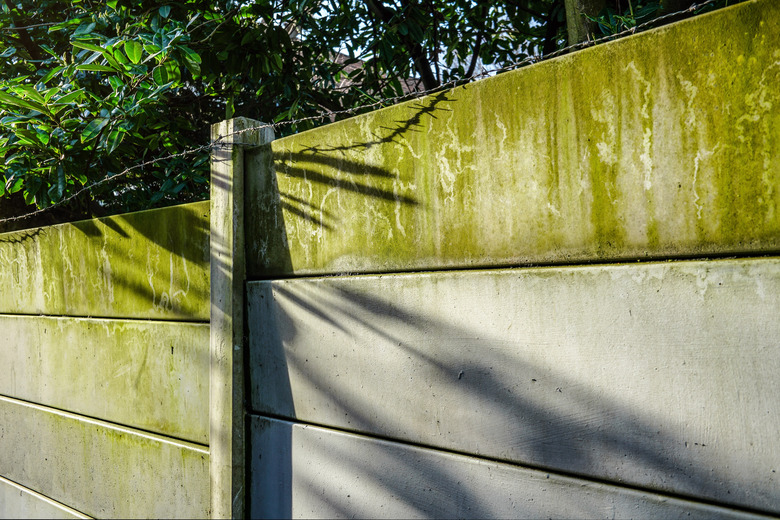5 Ways To Get Rid Of Green Algae On Cement Or Concrete
We may receive a commission on purchases made from links.
It's common for algae to start sprouting up on concrete located in damp areas. Algae growth may not damage cement, but it is unsightly and can make walkways dangerously slippery. Luckily, it is simple enough to kill off this problematic plant, as there are multiple ways to eliminate algae on concrete.
1. Use Boiling Water
1. Use Boiling Water
For small areas infested with algae, boiling water may be enough to kill off the plants. Carefully pour the hot water on the affected area and then use a synthetic brush to scrub away the algae. Use a hose to wash away the debris.
2. Try a Pressure Washer
2. Try a Pressure Washer
For sturdy, well-maintained concrete, a pressure washer can be a great way to remove algae by forcefully spraying it from the surface. Connect the pressure washer to your hose and use it according to the manufacturer's directions. Test the sprayer on an inconspicuous spot to ensure the high water pressure will not damage the concrete. Stand a safe distance from the area you are spraying and start by using the recommended spray tip and the lowest possible PSI, increasing the pressure until the spray is high enough to wash away the algae.
3. Use Oxygen Bleach
3. Use Oxygen Bleach
Nonchlorinated bleach, like OxiClean, can clean concrete without harming your plants or clothes. Mix a gallon of water with four scoops of oxygen bleach in a large bucket. Sweep your concrete to remove debris, use a sponge to apply the solution to the concrete's surface, and then scrub well with a large scrub brush. Allow it to sit for 30 minutes before rinsing.
4. Apply a Bleach Solution
4. Apply a Bleach Solution
Chlorine bleach may not be as gentle on plants and clothing as OxiClean, but it kills algae just the same. Because it can harm your plants, spray nearby greenery with water before applying the bleach to preemptively dilute any overspray. Only use bleach when wearing old clothes, gloves, and safety goggles.
Mix a cup of bleach with 1 gallon of water and then sweep away any debris in the area with algae growth. Use a sponge to apply the bleach to the algae and let it sit for 10 minutes before scrubbing thoroughly. Rinse thoroughly and repeat the process if necessary.
5. Try a Commercial Product
5. Try a Commercial Product
Many products on the market are specifically designed to remove moss, mold, and algae. While these might not be the cheapest option, they may be the most effective. Apply the product according to the manufacturer's directions, which usually involves diluting it, applying it with a pump sprayer, and letting it sit. Most of these products do not need to be scrubbed or rinsed off.
Warning
While many websites suggest using vinegar to kill algae, avoid doing so, as acidic substances like vinegar can degrade concrete. Only use cleaners with a neutral or positive pH level.
